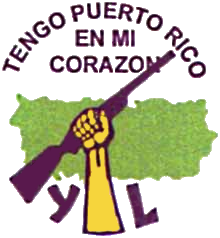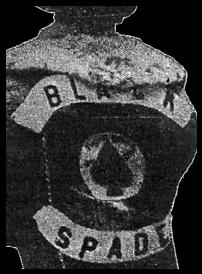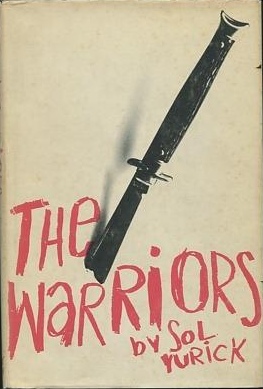
The Universal Zulu Nation is an international hip hop awareness group formed by and formerly led by hip hop artist Afrika Bambaataa.

Miguel Piñero was a Puerto Rican born American playwright, actor and co-founder of the Nuyorican Poets Café. He was a leading member of the Nuyorican literary movement.

East Harlem, also known as Spanish Harlem or El Barrio, is a neighborhood of Upper Manhattan in New York City, north of the Upper East Side and bounded by 96th Street to the south, Fifth Avenue to the west, and the East and Harlem Rivers to the east and north. Despite its name, it is generally not considered to be a part of Harlem proper, but it is one of the neighborhoods included in Greater Harlem.
The Ghetto Brothers were a gang and music group founded in New York City's South Bronx in the late 1960s with the motivation to uplift young Latino and Black men in their community.
Benjamin Melendez was best known for brokering the gang truce in the Bronx and Harlem in 1971. At that time, he was President of the Ghetto Brothers, a mainly ethnically Puerto Rican South Bronx gang, and lead vocalist of a musical group also known as the Ghetto Brothers.
The Hustle is a catch-all name for some disco dances which were extremely popular in the 1970s. Late 1970s, Bump, Hustle, Watergate and Spank were popular. It mostly refers to the unique partner dance done in nightclubs to disco music. Hustle has steps in common with Mambo and Salsa and basic steps are somewhat similar to Euro dance style "discofox", which emerged at about the same time and is more familiar in various European countries. Modern partner hustle is sometimes referred to as New York hustle, however, its original name is the Latin hustle.

The Nuyorican movement is a cultural and intellectual movement involving poets, writers, musicians and artists who are Puerto Rican or of Puerto Rican descent, who live in or near New York City, and either call themselves or are known as Nuyoricans. It originated in the late 1960s and early 1970s in neighborhoods such as Loisaida, East Harlem, Williamsburg, and the South Bronx as a means to validate Puerto Rican experience in the United States, particularly for poor and working-class people who suffered from marginalization, ostracism, and discrimination.

The Young Lords, also known as the Young Lords Organization (YLO) or Young Lords Party (YLP), was a Chicago-based street gang that became a civil and human rights organization. The group aimed to fight for neighborhood empowerment and self-determination for Puerto Rico, Latinos, and colonized people. Tactics used by the Young Lords include mass education, canvassing, community programs, occupations, and direct confrontation. The Young Lords became targets of the United States FBI's COINTELPRO program.

Salvador Agron, a.k.a. "The Capeman", was a Puerto Rican gang member who murdered two teenagers in a Hell's Kitchen park in 1959. Agron mistook both teenagers for members of a gang called the Norsemen who were supposed to show up for a gang fight. Agron was the subject of the musical The Capeman by Paul Simon.

The Black Spades were a mostly African-American street gang which started in the Bronx during the late 1960s and gained popularity in the 1970s. The gang began to spread from the Bronx to Manhattan, Queens, Brooklyn, Staten Island, New Rochelle, New Jersey, Massachusetts and Connecticut by the late 1980s. During this period Latino and white members were more common. The Black Spades have made a comeback in 2019 with more members joining. They are now TBS New Direction, a community service group championing anti-violence initiatives and providing food distribution for the food insecure.
The Hoe Avenue peace meeting was an important gathering of gangs that took place in the Bronx, New York City, on December 8, 1971. It was called to propose a general truce and an unprecedented inter-gang alliance. The impetus for the meeting was the murder of "Black Benjie", a peace keeper of the Ghetto Brothers. While no lasting peace was ever established, a subsequent negotiation established a procedure for dealing with conflicts to avoid street warfare. The meeting is notable as one of the first attempts by street organizations to broker a truce between groups of different ethnic backgrounds.

The Warriors is a novel written by Sol Yurick and illustrated by Frank Modell in 1965. In 1979, it was adapted into the film of the same name. Compared to the film, the novel takes a closer look at the concepts of sexuality, reputation, family, and survival.

80 Blocks from Tiffany's is a 1979 documentary directed by Gary Weis. It depicts the lives of gang members living in the South Bronx.
Gary Weis is an American filmmaker.
Bobby Sanabria is an American drummer, percussionist, composer, arranger, documentary producer, educator, activist, radio show host, and writer of Puerto Rican descent who specializes in jazz and Latin jazz.

The New York City mayoral election of 1985 occurred on Tuesday, November 5, 1985, with Democratic incumbent Mayor Ed Koch being re-elected to a third term by a landslide margin.
The Savage Skulls are a mostly Puerto Rican and African American street gang started in the Hunts Point area of the Bronx during the late 1960s, gaining popularity in the 1970s. The gang declared war on the drug dealers operating in the Hunts Point area in the early 1970s, and was also involved in a number of running battles with rival gangs, including the Seven Immortals, Savage Nomads, and Dirty Dozen.

The South Bronx is an area of the New York City borough of the Bronx. The area comprises neighborhoods in the southern part of the Bronx, such as Concourse, Mott Haven, Melrose, and Port Morris.











